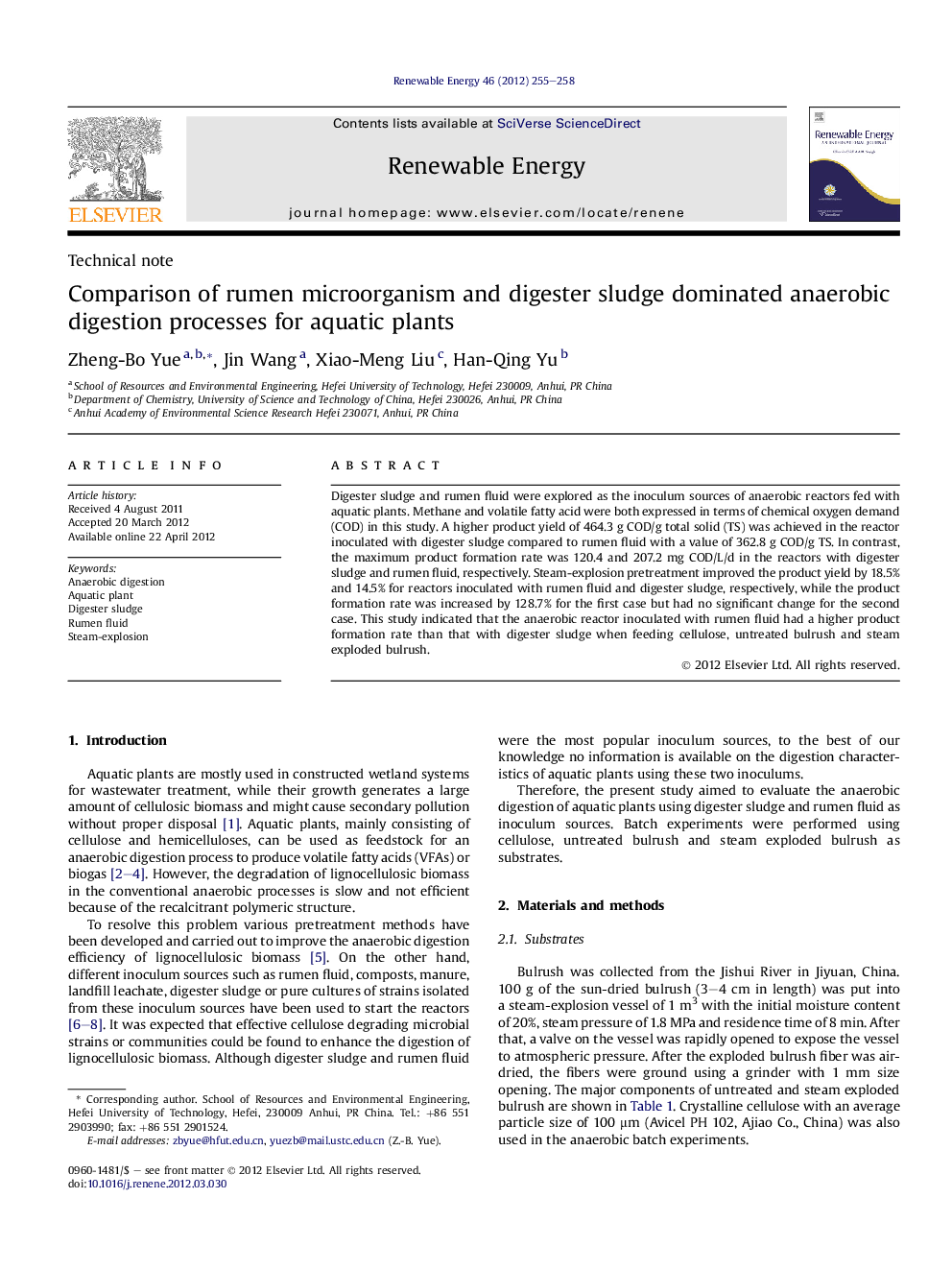| کد مقاله | کد نشریه | سال انتشار | مقاله انگلیسی | نسخه تمام متن |
|---|---|---|---|---|
| 300996 | 512494 | 2012 | 4 صفحه PDF | دانلود رایگان |

Digester sludge and rumen fluid were explored as the inoculum sources of anaerobic reactors fed with aquatic plants. Methane and volatile fatty acid were both expressed in terms of chemical oxygen demand (COD) in this study. A higher product yield of 464.3 g COD/g total solid (TS) was achieved in the reactor inoculated with digester sludge compared to rumen fluid with a value of 362.8 g COD/g TS. In contrast, the maximum product formation rate was 120.4 and 207.2 mg COD/L/d in the reactors with digester sludge and rumen fluid, respectively. Steam-explosion pretreatment improved the product yield by 18.5% and 14.5% for reactors inoculated with rumen fluid and digester sludge, respectively, while the product formation rate was increased by 128.7% for the first case but had no significant change for the second case. This study indicated that the anaerobic reactor inoculated with rumen fluid had a higher product formation rate than that with digester sludge when feeding cellulose, untreated bulrush and steam exploded bulrush.
► Rumen fluid was taken from the goat and used as the inoculums to digest aquatic plant.
► Digester sludge was used as control to illustrate the digestion efficiency of rumen microorganism.
► A modified Gompertz equation was used to describe the production formation process and calculate the kinetic parameters.
► Results confirmed that rumen microorganism has a higher digestion capacity compared to the digester sludge.
Journal: Renewable Energy - Volume 46, October 2012, Pages 255–258